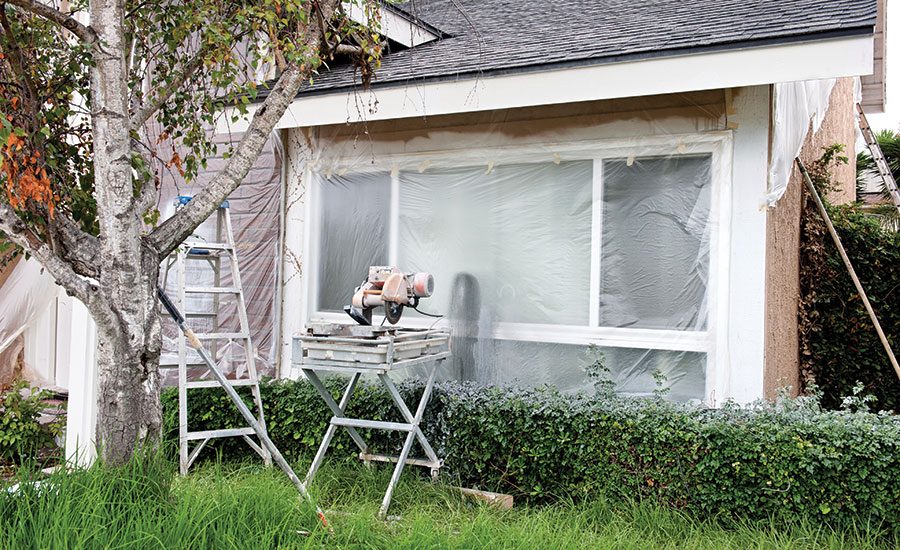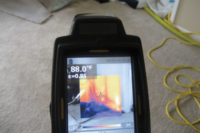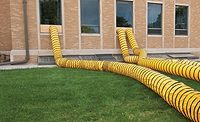Ever since Dr. Michael Berry published his guide for the cleaning and restoration industry entitled: Protecting the Built Environment: Cleaning for Health(Tricomm 21st Press,” 1993), I have seen a shift in the way professional cleaners and restorers manage pollutants in the built environment. He encouraged our industry to learn environmental practices including containment, which is a preventative procedure that reduces impact on our respiratory system.
Soon after Dr. Berry’s publication was released, the IICRC published its first version of S500 Standard and Reference Guide for Professional Water Damage Restoration in 1994. Containment procedures were included in the document which said “eliminating safety hazards is the technician’s first priority.” That containment process is to be followed by technicians determining further requirements for containment based on a particular job’s demands.
Looking back as a contributor to that document, we should have stated: “Containment will not eliminate safety hazards, but with proper workmanship and materials, it should reduce exposure routes.”
When the ANSI/IICRC S520 Standard for Mold Remediation was published, methods for containment took on a more prominent role. Every contaminant human beings are exposed to in the environment affects our health, making containment an important procedure. Negative pressurization, as well, is becoming a focus for prudent remediators and may be the unsung hero when utilized properly with containment.
The S520 Standard further discusses containment in Section 12.1.1.1 stating, “During mold remediation projects, containments generally are separated into three basic types:
•Source Containment
•Local “Mini” Containment
•Full-Scale Containment
Expanding containments may be necessary when additional mold contamination is discovered.”
The document goes on to stress the importance of properly handling or not disturbing contaminated materials, maintaining integrity throughout the remediation process, and constructing containment in such a way that if pressurization is lost flaps will close. Plus, the S520 talks about breaches, failures, monitoring, and documenting containment performance.
Containment procedures are also covered in the Occupational Safety and Health Act (OSHA). OSHA requires employers to provide a safe and healthful workplace. The employer’s role is to assure the safety of workers by implementing procedures for containing listed organic or inorganic particles, and those not listed specifically are covered under the Particulates Not Otherwise Regulated (PNOR). These rules are especially important when regulated substances are involved.
A very important segment of our remediation industry involves the remediation of healthcare facilities. Our industry may be dealing with at-risk populations and should understand the Facilities Guidelines Institute (FGI) “Guidelines for the Design and Construction of Healthcare Facilities,” which was adopted by 42 states. This document provides guidance on infection control during mitigation, construction and post-construction phases.
Many organizations provide training and testing, with some now employing competency testing for establishing containment. Hands-on training should be part of any training program and include procedures for designing, constructing, maintaining and removing containment protocols.
Employers should also develop standard operating procedures for erecting and maintaining containment. Normally, containment consists of 6 mil FR polyethylene sheeting erected in such a manner that it limits the exposure from contaminants to workers, occupants and unaffected areas or contents. Containment reduces risk by isolating clean areas from contaminated ones and should be labeled to effectively communicate to untrained individuals not to enter or otherwise compromise the space. This is critical when sensitive individuals, who are more vulnerable to environmental contaminants, are concerned.
Everything human beings are exposed to in the environment affects our health. OSHA provides activity sheets for workers in certain fields like mold remediation. For other operations or situations (i.e., asbestos, lead, mercury, etc.), specific information is also available. Mold procedures often vary depending on size or condition, as defined in the S520. Small isolated areas may not require containment, whereas mid-size and large areas typically need engineering controls to minimize cross contamination by containing contaminants at or near the source. Containment may be as simple as protecting areas directly adjacent with plastic sheeting or sealing contents, surfaces, and/or building openings, fixtures, and ventilation ducts/grills in the work area. If contaminated surfaces are present, isolation barriers can be erected to separate contaminated from uncontaminated areas and protect both workers and occupants.
Containment helps manage contaminants by controlling them close to their source and conscientious remediators understand that this simple process helps provide for the safety of workers and occupants.





Report Abusive Comment